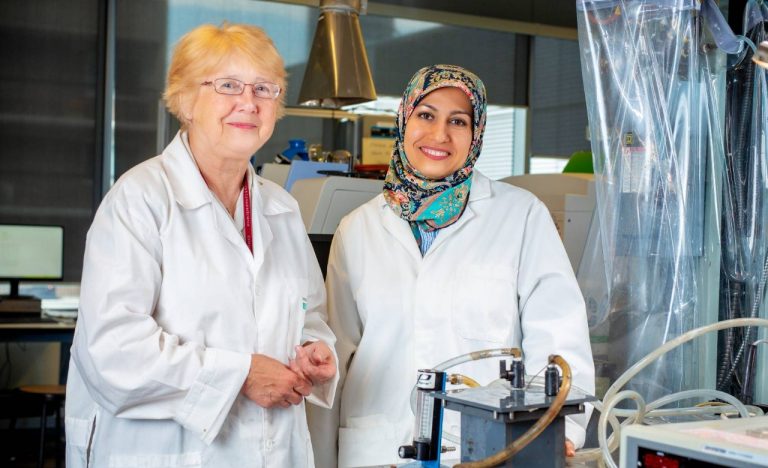Concordia researchers unlock a surprising source of renewable energy: gassy cows

The governments of both Quebec and Canada have made big commitments recently toward decreasing greenhouse-gas emissions. Among the most potent is methane, which the Government of Canada has pledged to reduce by 30 per cent by 2030.
According to Ottawa, agricultural activities account for 30 per cent of Canada’s methane emissions, with 71 per cent of that attributed to beef and cattle production. It’s a global issue, but one possible solution may be emerging here. That’s courtesy of Soodeh Abedini, a Concordia postdoc and research assistant, and professor Maria Elektorowicz, her supervisor from the Department of Building, Civil and Environmental Engineering.
In her PhD thesis, which she successfully defended in December 2021, Abedini outlines a device she designed that uses a novel electrochemical system that converts methane and carbon dioxide into electricity in situ.
A dairy serious issue
The cattle industry was a logical starting point to develop their research. The researchers note that each ruminant livestock produces between 60 to 120 kilograms of methane annually. Quebec’s robust dairy industry counts some 425,000 heads of cattle over more than 3,000 farms.
In its primary design, the device is small enough to fit into the ventilation system of barn housing anywhere upwards of 50 cows. As the carbon dioxide and methane emitted from the cattle travels into the exhaust system, the greenhouse gases are captured by the converter, which is attached to fuel cells. An electrochemical reaction converts the gases into electricity and is stored in the fuel cells. The cells are then used as a power source for the facility, creating a closed loop of perpetually renewable energy.
Elektorowicz says the device’s modular design allows it to be scaled up, with applications to wastewater treatment facilities, landfills and refineries possible. With its thousands of farms, hundreds of treatment plants and major refineries in Lévis and Montreal, Quebec produces roughly 76 metric tons of carbon dioxide every year. If, as the researchers believe, the system can convert up to 60 per cent of the gases it captures, this smart device could significantly contribute to achieving not only ambitious emission reduction goals but simultaneously also generate storable energy.
“This is the first device that is able to simultaneously decrease emission of both carbon dioxide and methane,” Elektorowicz says. “This makes Soodeh’s achievement all the more significant, as these greenhouse gases can now be used to generate electricity.”
The achievement was recognized in May at the Quebec Climate Solutions Festival, where Abedini was awarded a $40,000 runner-up Breakthrough Research prize.
“This is a solution that is easy to use and operates at ambient temperature and pressure, unlike other systems currently being developed,” Abedini explains. “As well, it is affordable and convenient, since it requires low-cost material for electrodes.”
On a personal level, Abedini says she is thrilled to see her research recognized.
“We need simple, uncomplicated processes for decreasing greenhouse-gas emissions,” she says. “I think this project has a bright future in Canada. There are many technologies that capture and store emissions but do not convert them to useful by-products. This one converts emissions into usable energy, and that makes me hopeful that we can achieve governmental objectives.”


